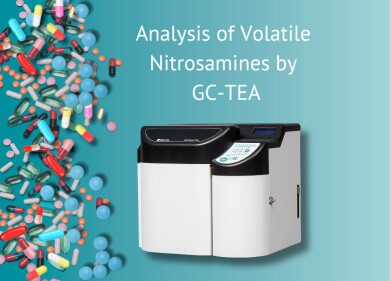Gas chromatography
Can Trees Monitor Pollution with the Help of Chromatography?
Sep 01 2021
Monitoring air quality is an important step in long-term pollution management. It’s usually done using air quality reading devices and monitoring stations. However, not all areas have those devices and stations, which is why other methods are sometimes required.
In this post, we’ll look at a recent study that shows how pine trees could provide a natural alternative.
The thinking behind pine needle analysis
It’s well documented that trees absorb pollutants from the air – most notably carbon dioxide, with mature trees absorbing 48 pounds of the stuff per year. With that in mind, researchers at South Korea’s Ministry of Environment hypothesised that trees might be useful to monitor pollutants which have been absorbed and accumulate inside them.
More specifically, they chose pine trees which are perennial, so they don’t lose their needles. Pine needles stay attached to their branches for at least two years, so they have plenty time to accumulate any pollutants that are present. Most importantly, pine trees can be easily found, with Pinus Koraiensis (Korean Pine) prevalent throughout eastern Asia.
How it’s done
To measure pollutant levels, researchers at the National Institute of Environmental Research used pine needles from trees that are at least three metres tall and a year old – in areas where pollution was suspected.
After being collected, pine needles were shredded and kept at an ultra-low temperature before freeze-drying. The finished product can then be analysed using methods including gas chromatography mass spectrometry and inductively coupled plasma atomic emission spectroscopy.
A similar use of gas chromatography to measure air pollutants is discussed in the article ‘Why do you Need to Measure BTEX in Ambient Air?’.
Putting it into practice
The methods described above will be used to measure a number of potential pollutants, including lead, chromium, cadmium and PAHs – polycyclic aromatic hydrocarbons. These are among the 64 air pollutants outlined in Korea’s Clean Air Conservation Act, which includes 10 types of heavy metal air pollutants and 16 PAHs.
Industrial activity is thought to be one of the leading causes of heavy metal air pollutants. While atmospheric levels may be low, these pollutants can build up in soils and make their way into the food chain – causing a range of issues. Cadmium is associated with kidney and bone damage as well as being linked to cancer, for example, while lead has been linked with high blood pressure and developmental issues for infants.
According to an article in the Korea Times, NIER is planning to test the technology on a larger scale next year. As well as pine needles, they are aiming to identify and develop more bioindicators which can detect pollutants in the air, on the land and in the water. That could prove particularly useful given the concerns about metallic compounds in water, which make their way up the food chain resulting in human exposure.
Events
May 11 2025 Vienna, Austria
May 18 2025 Tempe. AZ, USA
May 21 2025 Birmingham, UK
Jun 01 2025 Baltimore, MD, USA
Jun 15 2025 Bruges, Belgium


.jpg)











